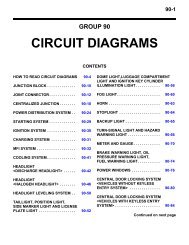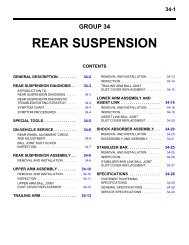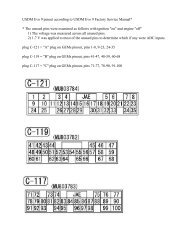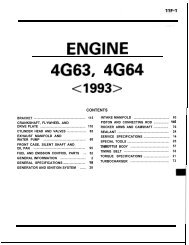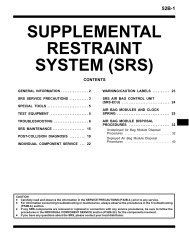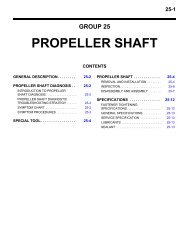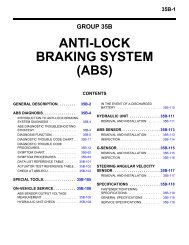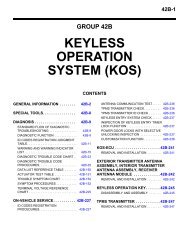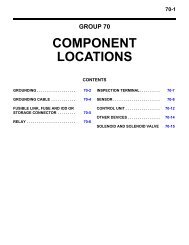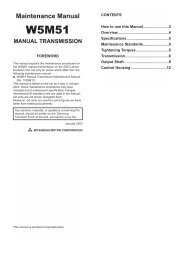Merlins Ralliart and EvoX TUNING GUIDE Version K.pdf - EvoScan
Merlins Ralliart and EvoX TUNING GUIDE Version K.pdf - EvoScan
Merlins Ralliart and EvoX TUNING GUIDE Version K.pdf - EvoScan
- No tags were found...
Create successful ePaper yourself
Turn your PDF publications into a flip-book with our unique Google optimized e-Paper software.
MERLINS RALLIART & EVOLUTION-X <strong>TUNING</strong> <strong>GUIDE</strong>The engine has to operate above the OCTANE UPDATE THRESHOLD, with aKNOCKSUM less than 3, before the octane number will be incremented. Thesesettings work well <strong>and</strong> there is little point in altering them. It is however useful toknow where to run the engine in order to quickly recover the best possible OCTANENUMBER.This next table sets the load <strong>and</strong> rpm point where the knock control becomes fullyactive. Knock control is active at loads below the threshold, but the amount ofspark retard is calculated differently – see below.Note that the low rpm table cells all have a load value of 159.4. Because the loadscaling is 5/8x, the maximum decimal value that can be put in the table is255*5/8=159.4. This means that KNOCKSUM cannot be disabled at loads above160. This is probably a good idea but it also means that Mitsubishi don’t particularlycare if the engine rattles below 2000rpm. In other words, you wont loose yourOCTANE NUMBER just because of a crappy hill start that got the engine detonatinga bit. If knock is detected at loads below the threshold, then the amount of sparkretard is limited by the maximum Knocksum. In this instance,Max Knocksum = 3*(HI-OCTANE SPARK – LO-OCTANE SPARK)So the maximum knocksum that can be generated is no longer 36, but 3x the deltabetween the two spark maps at the point of knock.Tuners have been able to eliminate false knock that occurred at load = 80 <strong>and</strong> rpm= 2700 by raising the threshold at that rpm point. The LOAD THRESHOLD v RPMtable values can be raised to say 100, if the false knock was at 90 (for a given rpm).If the value is raised, it will eliminate that false knock condition, at the expense ofhaving less knock protection below load 100 at that rpm.This may be an acceptable solution in some instances. Certainly there are tunerswho have done this <strong>and</strong> got a good result <strong>and</strong> cured their problem, but there is abetter way forward to tune out False Knock.REV: 0.K merlin@three.com.au Page 57 of 134




